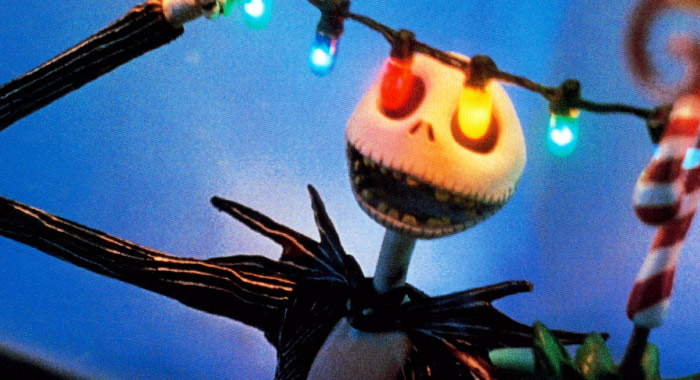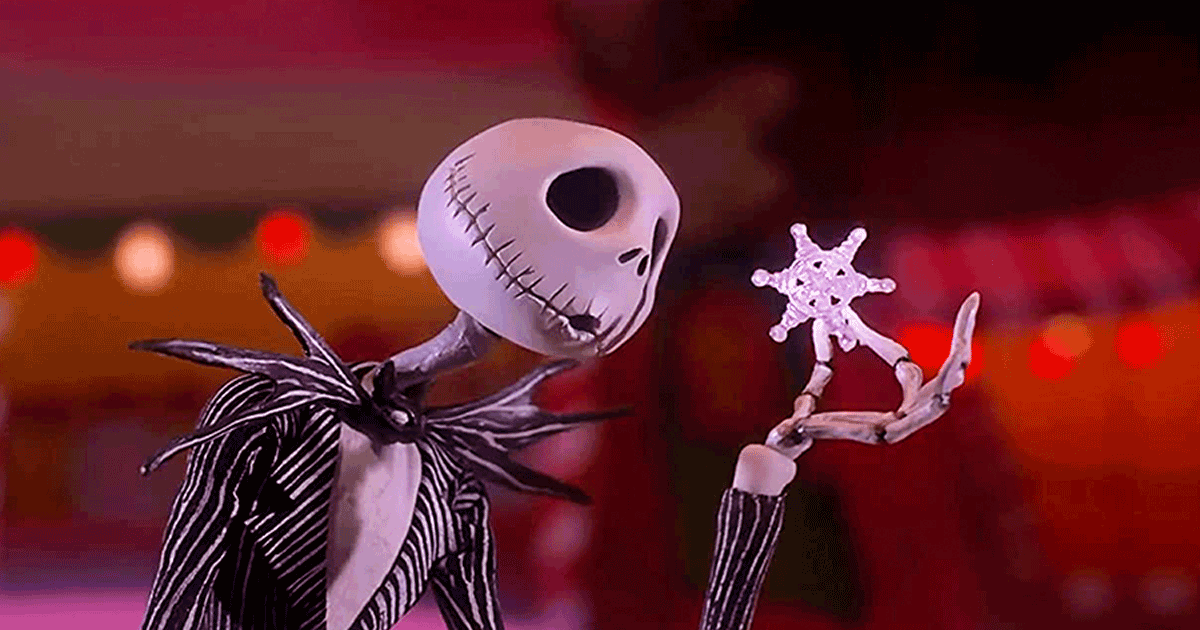Movie
Exploring the Depths of “What’s This Nightmare Before Christmas?”
“The Nightmare Before Christmas” is not just another animated film; it serves as a profound artistic endeavor that delves into intricate themes such as identity, acceptance, and the quest for new experiences. Pioneered by the visionary Tim Burton and brought to life through wonderfully expressive animation, the film remains iconic, captivating audiences with its colorful visuals and heartfelt music. Central to this narrative is the hauntingly beautiful song “What’s This?” composed by Danny Elfman, which epitomizes the struggles faced by the protagonist, Jack Skellington, as he yearns to comprehend and connect with the essence of Christmas.
Through Jack’s journey, audiences confront their own battles with self-discovery, illustrating how one man’s exploration of a seemingly foreign realm unfolds into a larger dialogue about diversity and social acceptance. This article embarks on an immersive examination of “The Nightmare Before Christmas,” particularly focusing on the significance of “What’s This?”, exploring its artistic nuances and cultural impact in depth.
The Origins of “What’s This?”
Before diving deeper into the thematic elements surrounding “What’s This?”, it’s paramount to explore its origins within the narrative of “The Nightmare Before Christmas.”
Jack’s Discovery of Christmas Town

Jack Skellington, known as the Pumpkin King, experiences a transformative moment when he inadvertently stumbles upon Christmas Town.
Here lies a vibrant world bubbling with joy, contrast sharply against the eeriness of Halloween Town, where Jack reigns supreme. The revelation of Christmas Town ignites a torrent of emotions in Jack; it’s a profound moment of awe, wonder, and confusion. His initial reaction encapsulated in the phrase “What’s This?” reflects more than mere curiosity; it embodies his longing to break free from monotony and discover new dimensions of existence. This is a crucial aspect of Jack’s character—his resolve to transcend boundaries imposed by societal norms, reflecting an intrinsic desire shared by many who seek to redefine their identities.
A Journey of Self-Exploration
The song “What’s This?” serves as a reflective lens through which viewers can examine their own journeys of self-discovery.
It symbolizes Jack’s internal conflict as he grapples with what Christmas means, especially as he endeavors to contrast it with his existing Halloween identity. Encountering new traditions forces Jack to confront issues deeply embedded in human nature—the challenge of reconciling one’s past with future aspirations. In essence, Jack’s adventure becomes an embodiment of life itself—a perpetual search for meaning influenced by encounters across diverse cultural landscapes, resonating with audiences who may similarly be seeking inspiration or challenging their stereotypes.
Cultural and Artistic Legacy
“What’s This?” is significant in the cultural fabric of cinema, symbolizing more than just a momentary surprise; it resonates with audiences on multiple levels.
Danny Elfman’s masterful musical composition introduces a unique blend of whimsy and intrigue. The magical soundscape elevates the visuals, immersing listeners while spotlighting deep emotional narratives. Elfman’s ability to evoke surreal imagery through sound parallels how an artist uses colors and textures on canvas, creating an unforgettable soundtrack that resides timelessly in the realm of pop culture. Through repeated listens, fans unearth layers of meaning, enriching their appreciation of the film and fostering extensive discussions regarding its underlying messages.
Jack Skellington: Navigating Identity and Tradition

Jack Skellington’s character arc unfolds amidst his encounters with Christmas traditions, challenging him at every turn. His journey offers fertile ground for exploring the theme of identity juxtaposed against the specter of tradition.
Questioning One’s Identity
Throughout “What’s This?”, Jack’s reflections voice a fundamental question that transcends the storyline—who am I?
This inquiry rises prominently as Jack observes the joy inherent in Christmas, specialties far removed from the spookiness of Halloween. It highlights the fragmented nature of personal identity shaped by external influences, evoking thoughts around collective expectations vs. individual desires. Thus, Jack’s metamorphosis enlivens the discourse surrounding identity, showcasing how exposure to alternative perspectives leads to meaningful introspection.
Embracing Differences
Jack’s encounter with Christmas festivities broadens his perception, allowing him to embrace differences rather than reject them—an essential component of societal evolution.
By engaging with Christmas symbols and traditions, Jack commits himself to navigate uncharted waters, emphasizing adaptability. His initial misunderstanding and ultimate integration of Christmas practices illustrate a commendable embracing of change. This act reflects ideals upheld in contemporary societies advocating for openness, demonstrating the rich rewards that accompany cultural exchange.
The Intersection of Fear and Acceptance
In portraying Jack’s exploration of Christmas, the film confronts the innate fear tied to altering one’s worldview.
Jack’s hesitance surfaces during key moments, revealing a struggle between his Halloween legacy rooted in terrors and the joyous vibrancy of Christmas. However, rather than succumbing to fear, Jack learns to harmonize these divergent elements, discovering strength in vulnerability. This pivotal lesson echoes loudly: confronting fear paves the way for acceptance, unveiling pathways toward authenticity. The dynamic interplay illustrates that while tradition holds salience, engagements with new cultures often lead to enriched identities and broadened horizons.
The Artistic Craft of Billy Elfman and Visual Mastery

Danny Elfman’s contribution to “The Nightmare Before Christmas” extends beyond melodies; his artistic vision fuses music, storytelling, and visual artistry into an opulent spectacle.
Soundscapes that Enrich Narratives
Elfman ingeniously weaves soundscapes that complement the visual storytelling.
Each note captures the essence of individual scenes, transforming equally important expressions into auditory experiences that linger long after viewing. For instance, the whimsical flow of “What’s This?” intersperses notes of wonder with hints of trepidation—all amplifying Jack’s emotional voyage. Moreover, Elfman’s compositions serve as conduits for expressing nuanced emotions that dialogue cannot traditionally convey.
Visual Imagery Reflecting Themes
Visual artistry in “The Nightmare Before Christmas” posits to enhance aesthetic appreciation—a harmonious marriage between image and intention.
Tim Burton’s distinctive dark yet whimsical style captures the contrasts central to the film—from the ominous design motifs of Halloween Town to the radiant hues of Christmas Town. Such opposing aesthetics entice viewers to distinguish between the familiar and unfamiliar, compelling them to reflect on how environments shape perception. Therefore, an analysis of visual elements amplifies understanding of overarching themes concerning identity and cultural constructs portrayed in the narrative.
The Impact of Collaboration
Ultimately, it is the collaborative synergy between Elfman and Burton that creates an enduring legacy.
They summon equal parts creativity and thoughtfulness, threading multilayered narratives that both entertain and provoke contemplation. Their experimentation challenges conventions in animated films, diversifying audience responses and setting benchmarks for subsequent works. The result isn’t merely a story but a catalyst for open dialogues about identity, perceptions of culture, and bridging connections among differing sectors of society.
The Cultural Impact of “What’s This?”

“What’s This?” exists beyond the confines of its theatrical release, positioning itself as a pivotal cultural artifact that continues to resonate within modern discourse.
Pop Culture Influence
Since its debut, “The Nightmare Before Christmas” has permeated various facets of pop culture, evolving into an omnipresent reference point.
With annual celebrations like Halloween and Christmas intertwined with Jack’s tales, the song gains a place in seasonal traditions, drawing new generations into the film’s fold. Fans avidly engage in analyses surrounding characters, themes, and music, facilitating broader discussions about existence—a testament to its sustained relevance amid an ever-shifting cultural landscape.
Community Engagement and Fan Contributions
Communities centered around “What’s This?” maintain a lively atmosphere where fans collectively discuss intricacies of the film and share creative interpretations.
Online platforms transform into dedicated spaces, uniting like-minded individuals fascinated by diverse viewpoints articulated through music, imagery, and narrative. Compilations of covers, fan art, and even cosplay further integrate the song into contemporary culture—a vivid display of how creativity fosters connections that span generations and distances.
Enduring Messages of Acceptance
Moreover, the enduring themes espoused in “What’s This?” extend their implications far past aesthetic enjoyment, beckoning viewers to consider messages related to acceptance and personal growth.
Conversations arising from the film echo societal calls for empathy and understanding amid challenges like discrimination and isolation. By embodying those values, Jack Skellington’s journey cultivates discourse grounded in optimism and celebration of uniqueness, propelling forward notions fostering unity among diversity.
“What’s This?” from “The Nightmare Before Christmas” unfurls layered meanings that encapsulate the complexities of identity, cultural exchange, and societal acceptance. Through Jack Skellington’s adventurous spirit and Danny Elfman’s enchanting melodies, this tale spans beyond visual and auditory delight, inspiring introspection and community engagement. As cultures intersect, embracing differences shapes a richer narrative about humanity’s inherent drive towards understanding and harmony. Thus, “What’s This?” becomes a vital piece of our cultural tapestry, inviting ongoing exploration of self amid ever-evolving landscapes of tradition and novelty.
